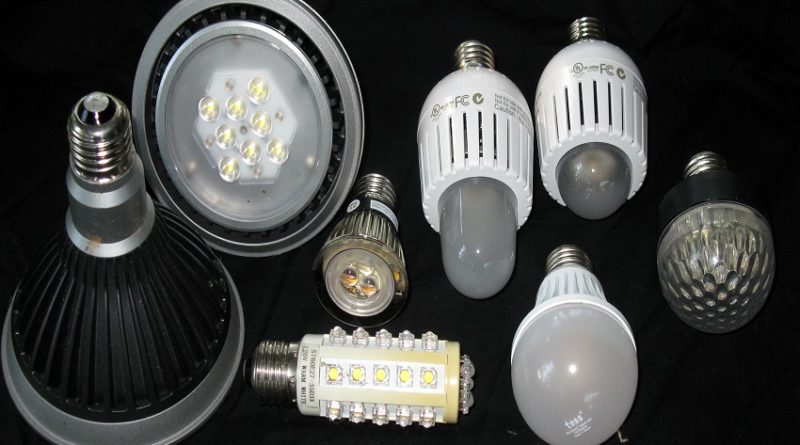The Positive and Negative Effects Of LED Lights
LED (light-emitting diode) bulbs have made a huge splash since they were introduced a few years ago. The technology was exciting and the benefits were many. However, since their introduction, we’ve had time to study the pros and cons of LED lighting and we’ve discovered that nothing is without its risks.
While increased efficiency, lower heat generation, and significantly improved durability are all benefits of switching from incandescent to LED lighting solutions, these bulbs are not without their detractors. The potential toxicity risk, glare, and aesthetic of these new bulbs have prevented some from getting on board what is an increasingly uniform consensus that LED bulbs are going to be the defacto bulbs of the future.
Here is a look at the positive and negative effects of LED light bulbs.
EFFICIENCY
The most economical benefit of LED light bulbs is their efficiency. A bulb’s efficiency is measured by comparing the lumen output to the watt usage. A traditional incandescent bulb has a lumen/watt ratio of around 13 to 18. For halogen bulbs, the ratio is increased to a 55-70 lumen/watt ratio, making it two to three times more efficient. An LED bulb, however, has a 100 to 150 lumen/watt ratio, making it the most efficient bulb on the market.
Atlanta Light Bulbs, for example, offers maximum efficiency bulbs like the Philips A19, which has a lumen output of 1500 and a wattage of 14.5, producing a 103 lumen/watt ratio.
ULTRA VIOLET LIGHT
LED bulbs do not generate heat as they do not rely on electrifying filaments or gases to produce light—leading to two main benefits. First, LED bulbs minimize fire risks by generating no heat loss. In this way, you can place an LED bulb near fabric or plants without the risk of them catching fire. Also, LED bulbs are “instant on,” as illumination does not delay while components heat up. Furthermore, LED bulbs do not radiate harmful ultraviolet light.
Feit produces two LED products that are red spectrum enriched. This means that the lights emit a wavelength that is not UV, but is still beneficial to plants by stimulating photosynthesis and growth.
DURABILITY
While changing a light bulb is a relatively minor chore for most people, The average lifespan of an incandescent bulb is around 5,000 usage hours. A halogen bulb is lower, clocking in at around 3,000 usage hours. LED light bulbs, however, may last 25,000 to 40,000 hours or longer.
This means changing bulbs far less frequently, and while swapping out a light bulb in your average residential application is a relatively minor chore, consider more industrial or municipal applications: stadium lights, parking lot lights, streetlamps, warehouse lighting. Changing light bulbs in these situations can not only be costly, but time-consuming, and even dangerous. With LED bulbs, there’s far less cost, time spent, and risk posed to employees responsible for changing these bulbs.
While traditional bulbs burn out and stop producing light, LED bulbs color shift and become dimmer. This means that a standard white LED light will color shift to blue by the end of its lifespan and reduce its lumen output.
TOXICITY
One of the main risks when using LED lights occurs when an LED is poorly made. A poorly made LED will start to create a blue light that causes photochemical reactions in the eye. According to a report by the Illumination Engineering Society (IES), the blue light causes cellular oxidative stress in the retina after accumulated exposure. The report highlights that children, light-sensitive individuals, and workers exposed to high-intensity lighting are most at risk of the toxic stress.
GLARE
As with any light, high luminosity or high concentration LED lights pose a glare risk to eyes.
To combat this, manufacturers created bulbs that are shielded from producing too much light or bulbs that can be dimmed. There is a wide variety of LED products with a diffused luminance, including the Halco brand BR40FL18 bulb, which is a dimmable bulb with diffusive, 100-watt equivalent lighting.
ARE LEDS WORTH IT?
The LED bulbs minimal risk factors and cost-saving benefits make it a popular option for replacing older technology and lighting products.
LEDs are quickly becomes the default lighting solution for homes, businesses, and schools. As energy demands increase, these efficient bulbs continue to make more financial sense, and as they continue to become more widely available, the cost of replacing your traditional incandescent bulbs becomes increasingly obsolete. The U.S. Department of Energy estimates that, if more and more people convert their lighting systems from incandescent to LED at a continuously increasing rate, total energy costs can be dramatically reduced.
While LED lighting solutions are not without some downside, it appears that the tide has turned in the favor of LED—which stands to become the standard bulb of what many hope will be a brighter future.

